Withlacoochee River System Update - 4/1/2020
Southwest Florida Water Management District sent this bulletin at 04/01/2020 04:36 PM EDTLack of Rainfall in March Signals Real Start to Dry Season
Rainfall:
- All signs are pointing to drier conditions ahead.
- Besides a little rain yesterday, the entire month of March was rain-free.
- Water levels and river flows are now experiencing sharper declines.
- Aquifer levels, which have been well above average for nearly 2 years, are now about normal (55th percentile) for this time of year.
- So far this year (Jan – March), our region has received just over 3 inches of rainfall, about a third of the historical average (9.6 inches) for the first 3 months of the year.
- Higher rainfall amounts (6-8 inches per month) don’t typically occur until our summer rainy season (June – September), which means we can expect a couple more months of declining water levels and river flows.
- But don’t be alarmed, this is all part of the fluctuations our water resources naturally experience between wet and dry seasons in Florida.

River Swamp with Evidence of Past Flood on Large Cypress Tree in Croom Forest (March 2020)
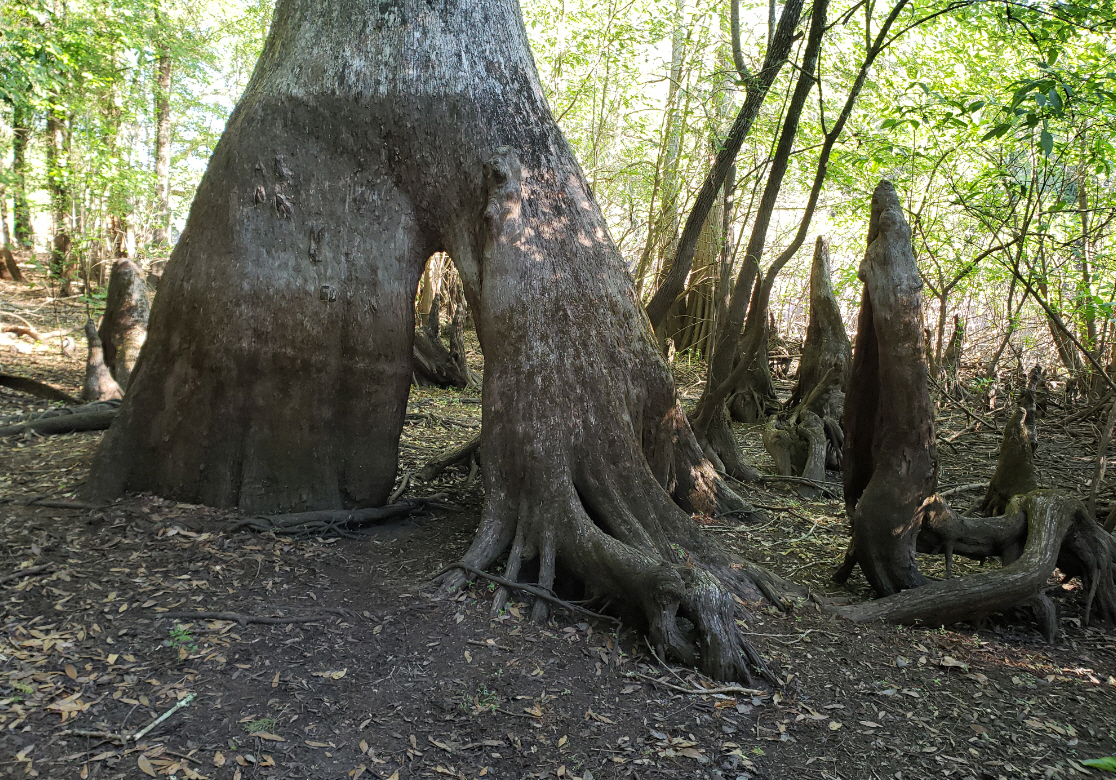
Withlacoochee River (from the Green Swamp downstream past Hwy 200):
- Along the entire river, water levels and flows are declining.
- River levels have dropped an average of 16 inches this past month.
- River flows have declined by about 50% during that time.
- Flows exiting the Green Swamp (where the river begins) have all but stopped.
- Much of the water stored in nearby wetlands and soils from the rainy season, is now disappearing due to higher evaporation rates and less rainfall.
- If this trend continues, river levels and flows are expected to drop significantly lower in April/May and it will take much more rain this summer fill things back up.
- The table below compares current river levels and flows to what they were last month and last year.
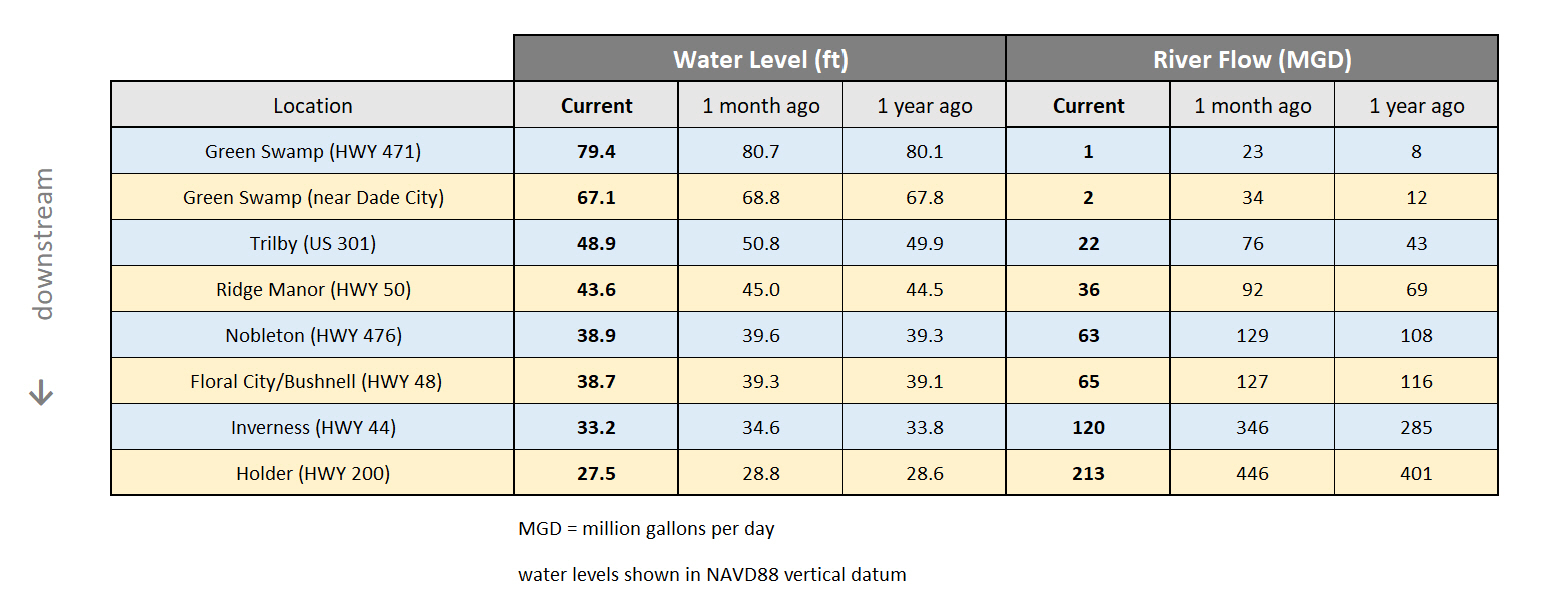
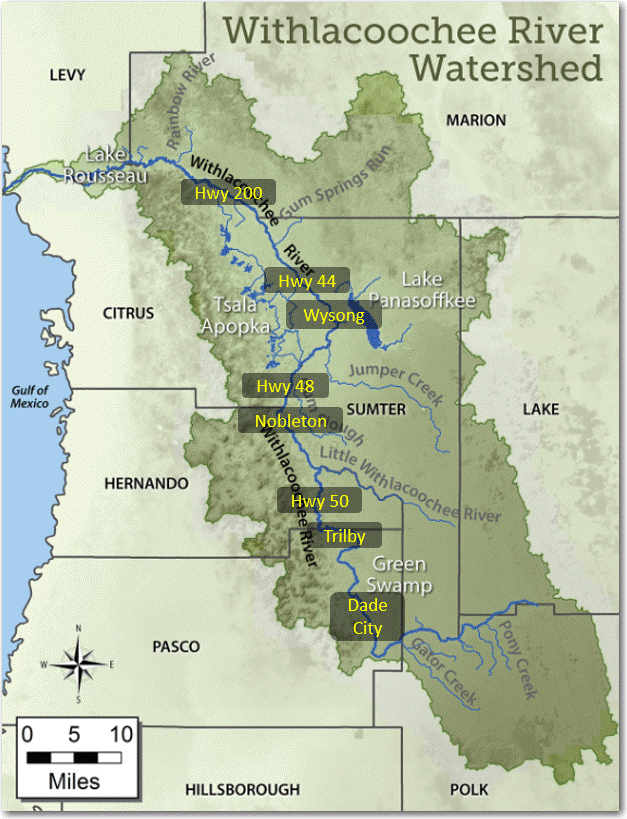
Tsala Apopka Chain of Lakes:
- Lake of rainfall is certainly beginning to show in the three pools of the Tsala Apopka lake chain.
- Lake levels fell about 6 inches in March and are currently about 13 inches lower than they were last year at this time.
- All the water control structures (aka “locks”) remain closed, helping to conserve water in the lakes.
- Lake levels are expected to continue to decline over the next couple months as our dry season continues.
- The table below compares current water levels to what they were last month and last year.
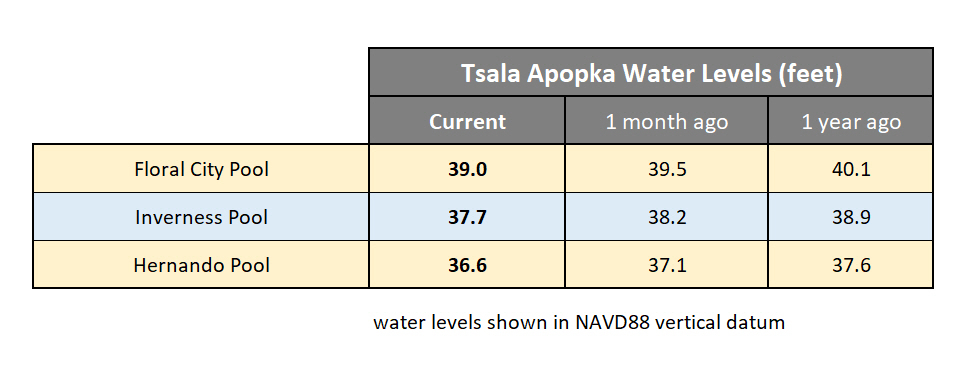
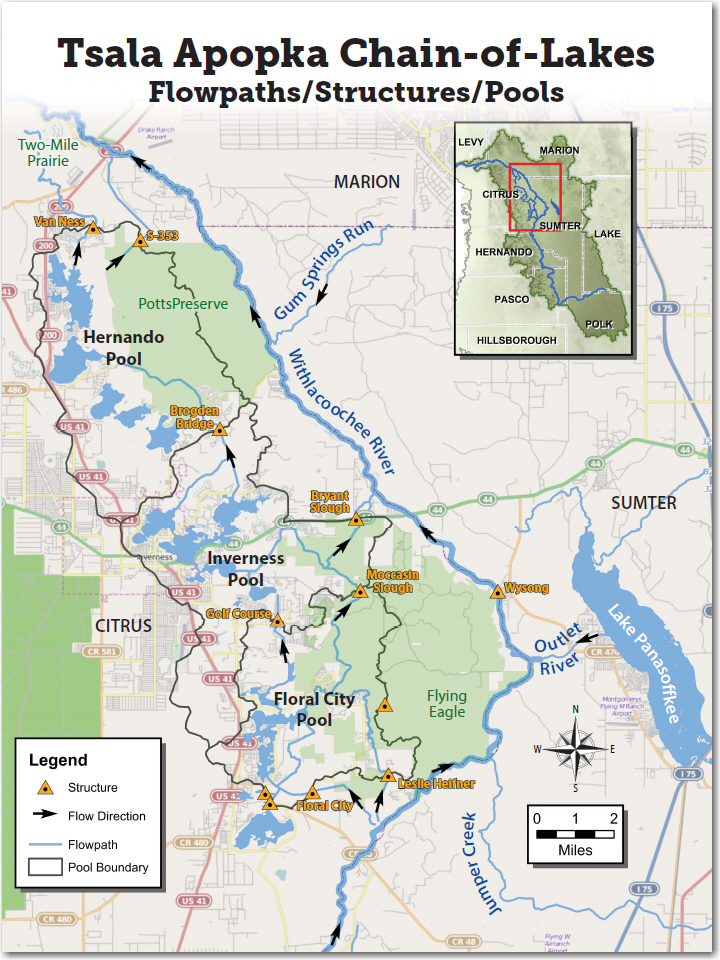
Lake Panasoffkee and Wysong:
- Water levels on Lake Panasoffkee fluctuate based on changing inflows and outflows, which are the result of rainfall.
- The Wysong water conservation structure is currently fully raised, helping to conserve water upstream and in Lake Panasoffkee.
- Over the past month, lake levels have declined by 3.6 inches, a result of less rainfall, lower aquifer levels, and declining inflows to the lake.
- Outflow from the lake to the Withlacoochee River also declined significantly in March.
- Currently, Lake Panasoffkee is about 6 inches higher than the historical average for this time of year, but we can expect lake levels to continue to decline over the next couple months.
- Last summer lake levels were extremely high due to hydrilla growth in the Outlet River, preventing outflow to the Withlacoochee River.
- To help prevent a similar situation this summer, staff from FWC and the District are currently conducting a 2-day herbicide treatment to remove hydrilla from the Outlet River again.
- The table below compares current lake levels and flows to what they were last month and last year.
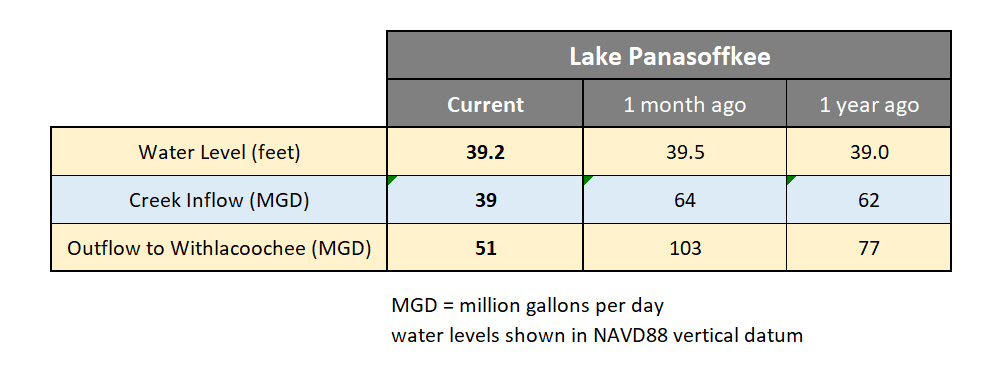
Collecting Flow Measurements on Outlet River to Support Hydrilla Treatment (March 2020)

Lake Rousseau and the Lower Withlacoochee River (from Dunnellon to the Gulf of Mexico):
- Downstream from Dunnellon, the Withlacoochee River is influenced by water control structures on Lake Rousseau.
- Inflows to Lake Rousseau include combined flows from the Withlacoochee and Rainbow Rivers.
- Withlacoochee River flows (which depend on rainfall and runoff from adjacent lands) declined by 50% over the past month.
- Flow in the Rainbow River (which reflects changes in aquifer levels) decreased by 7% over the past month.
- Most of the flow entering Lake Rousseau is now coming from the Rainbow River (a situation we typically see during the dry season).

- Outflows from Lake Rousseau have decreased by about 40% over the past month and are currently much lower than they were at this time last year.
- All flow entering the lake is currently passing through the Inglis Bypass Spillway to the Lower Withlacoochee River.
- The Inglis Main Dam, which conveys excess flow to the Barge Canal, has been fully closed for the past couple months.
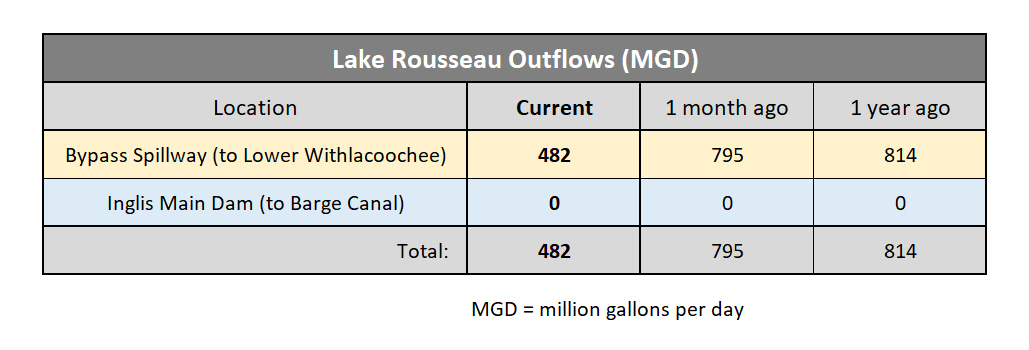
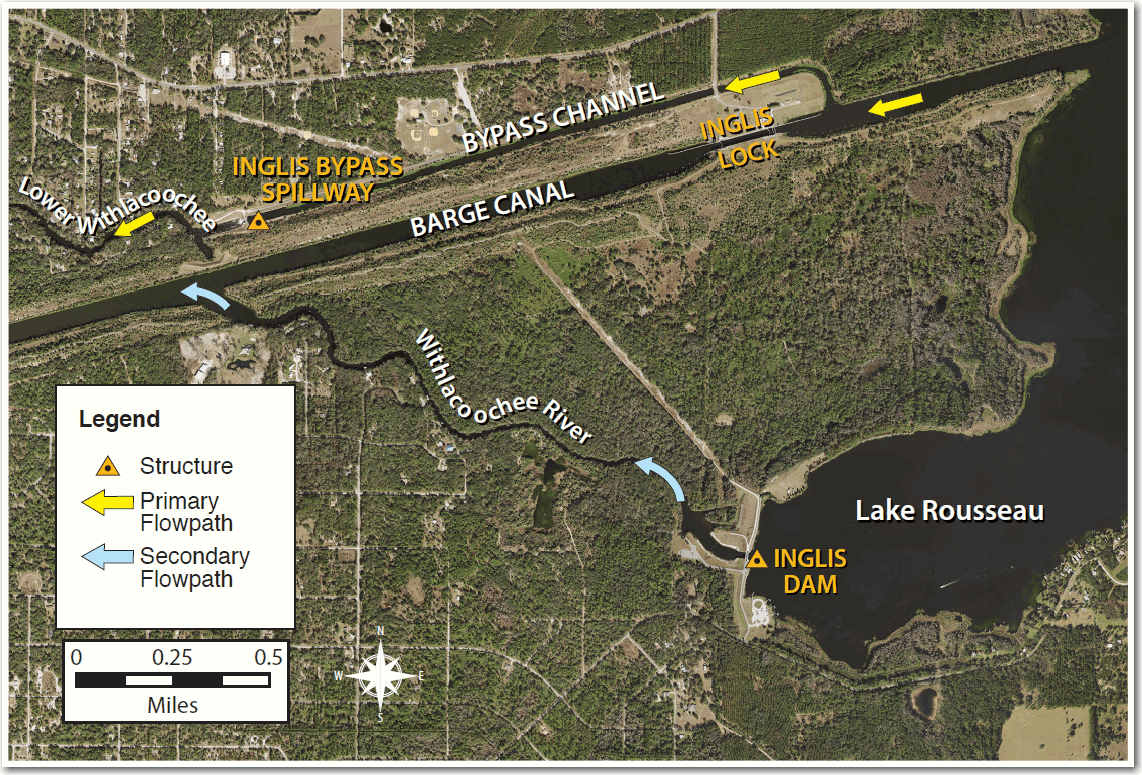
Be safe and stay healthy!
Mark
Mark Fulkerson, Ph.D., P.E.
Chief Professional Engineer
Water Resources Bureau
Southwest Florida Water Management District
(352) 796-7211, ext. 4410
(800) 423-1476 (FL only)
(352) 279-4493 (cell)

